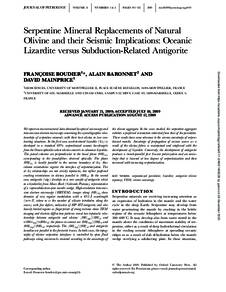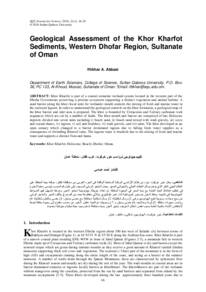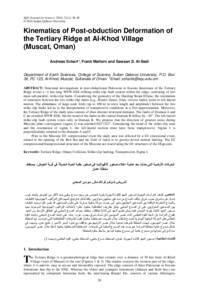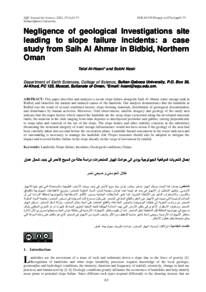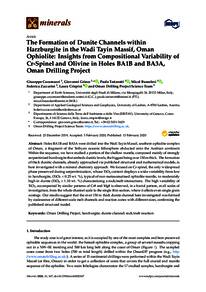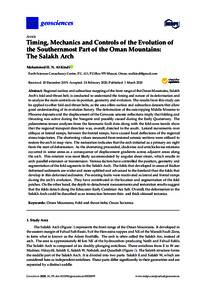Document
Does anisotropy of thermal contraction control hydrothermal circulation at the Moho Level below fast spreading oceanic ridges?
Identifier
DOI: 10.2747/0020-6814.47.1.101
Source
International Geology Review. v. 47, 1, p. 101-112
Contributors
Nicolas, Adolphe., Author
Mainprice, David. , Author
Country
United Kingdom.
City
Abingdon
Publisher
Taylor & Francis Group, LLC.
Gregorian
2005-01-01
Language
English
Subject
English abstract
It has been proposed that deep, high-T (up to 1000°C) hydrothermal alteration occurred within the gabbro section, near the paleo-ridge axis in the Oman ophiolite. In the deep, hot gabbros, the main water channels are submillimetric microcracks with a dominantly vertical orientation (Nicolas et al., 2003). Sr and O isotopic investigations point to seawater as the most likely hydrothermal contaminant (Bosch et al., 2004). It was proposed that the mechanism for seawater ingression at temperatures above 700°C was anisotropy of thermal contraction in gabbros, opening microcracks that are controlled by crystallographic fabrics. The exceptionally large anisotropy of thermal contraction of single-crystal calcic plagioclase, when combined with the lattice fabrics of the gabbros, results in the largest thermal contraction being parallel to the mineral lineation, which is itself normal to the ridge, thus inducing vertical fractures parallel to the ridge plane. High-T hydrothermal alteration in gabbros extends to the Moho. Interestingly, in the underlying peridotites, with a dominantly horizontal foliation, the direction of largest thermal contraction, calculated as above from fabrics and thermal expansion coefficients of olivine, is vertical, potentially responsible for subhorizontal cracking. Thus, during the off-axis drift of newly accreted lithosphere, at the limits of the axial magma chamber, thermal contraction opens vertical cracks in the crustal gabbros, favoring seawater ingression down to the Moho. Just below the Moho, the horizontal cracking preferred orientation could be closing the high-temperature hydrothermal circuit at this level. At temperatures below 700°C, oceanic ridge spreading—related tensile stress is dominant, inducing ridge-parallel cracking in both the crust and lithospheric mantle. Circulation of seawater-derived fluids in the Moho transition zone at gabbro solidus conditions should have important consequences for magmatic processes.
ISSN
0020-6814
Category
Journal articles


